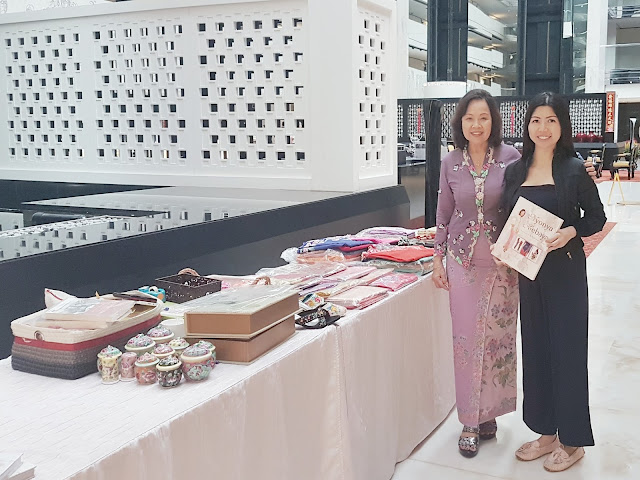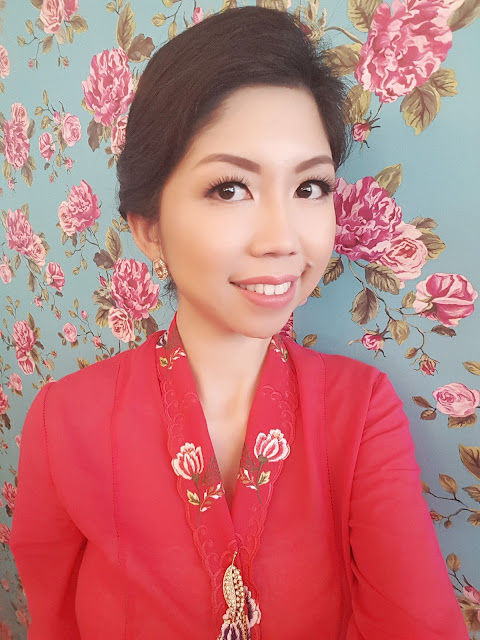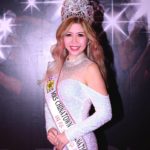My curiosity for Peranakan culture started young when I asked my mom if those ladies wearing the pretty kebaya were Chinese or Malay. My mom replied Chinese and my thoughts started running again on why they have this tinge of Malay culture with batik prints on their dressing. These thoughts were placed aside for many years until I was invited by Executive Chef Raymond Khoo of The Peranakan restaurant to sample authentic Peranakan cuisine.
The restaurant was filled with beautiful old school decor with kebayas hanging at the window panels, furnishing and utensils used all well taught to give diners a homely feel. Thereafter, I had the opportunity to invite my media friends to try his cuisine too which was well received by all of them.
Thank you to the below guests for making the time to come together despite your busy schedule.
Jerry Hoh, Artiste
Gillian Tan, Artiste
Debra Teng, Artiste
Vincent Tee, Artiste
Francis Tan, Travel Media
Desmond Raphael Ang, Travel Media
Ann Poh, Artiste
Michael Kwah, Artiste
Joanna Portilla, Chairman of WIN
Besides the food, I was once again mesmerized by the kebaya displayed right outside the restaurant that was sold by Ms Christine Ong Kiat Neo. I picked up the book she wrote and stood there for a good 10 mins and knew that I should get in touch with her soon and her kebaya would be the theme for my 2017 Chinese New Year shoot instead of the usual qipaos that I wore in the past years.
And I was all ready to be little nyonya! I love the flawless finish and bronze finish on my eyes, giving me a clean and elegant look right for a nyonya! The hair was bunned up with a modern yet chic soft curl finish adding a womanly touch to go along with the kebaya. Thank you dearie for making this magic.
My look for the 2 kebayas that I wore for the shoot.
Many notable and respectable figures in Singapore who are Peranakan:
- David Lim Kim San: Head of Music Department in the Ministry of Education (1969)
- Dick Lee: Celebrity pop singer, composer and playwright
- Gan Eng Seng: Malaccan born businessman and philanthropist in Straits Settlement of Singapore and Malaya[59]
- Goh Keng Swee: Deputy Prime Minister of Singapore
- Ivan Heng: Actor
- Lee Hsien Loong:Third Prime Minister of Singapore
- Lee Kuan Yew: First Prime Minister of modern Singapore
- Lim Boon Keng: Penang born physician and social activist in Singapore
- Lim Kim San: Former Cabinet Minister[59]
- Lim Nee Soon: Merchant and entrpreuer of the Straits Settlement of Singapore
- Pierre Png: Mediacorp artiste
- Piya Tan: Buddhist writer and teacher
- Seow Poh Leng: Banker, philanthropist and a committee member of the Straits Settlement (Settlement of Singapore)
- Song Hoot Kiam: Teacher, cashier and a community leader
- Sir Song Ong Siang: Lawyer and active citizen of the Straits Settlement of Singapore, son of Song Hoot Kiam
- Tan Chin Tuan: Chairman of OCBC
- Tan Kim Ching: Politician and businessman, the eldest son of Tan Tock Seng
- Tan Kim Seng: Malaccan born philanthropist and merchant[59]
- Tan Tock Seng: Malaccan born merchant and philanthropist of the Straits Settlement of Singapore[60]
- Toh Chin Chye: Deputy Prime Minister of Singapore
- Tony Tan: Seventh President of Singapore
- Walter Woon: Lawyer, academic, diplomat, politician and 7th Attorney-General of Singapore
- Wee Kim Wee: Fourth President of Singapore
Peranakans speak a Malay based patois that contains a mixture of Chinese dialects, Tamil, Portuguese and English. Initially, the nyonyas wore baju panjang (loose, long sleeved tunic that ended at the knee or calf) matched with a batik skirt tube skirt). Under the baju panjang was another long sleeved, white cotton undershirt called baju dalam.
Source: http://peranakan.hostoi.com/page9.htm
A batik sarong is divided into two panels, the head (kepala) which usually has a more elaborate pattern and takes a third of the length, and the larger two-thirds of the body(badan). Batiks come from the island of Java towns such as Pekalongan, Cirebon, Semarang, Lasem and Surabaya and also from Madura Island.
Some popular patterns/motifs:
phoenixes (good fortune/great achievements/female)
butterflies (long life/attraction)
peonies (personifying beauty)
A typical way of securing the brooches on the kebaya would be to overlap the right side of the kebaya over the left by 2cm and pin the brooch through. The final look would be a securely and neatly fastened top with brooches facing up.
In modern times when camisoles are not necessary, you could wear a skin-tone brassiere. Christine recommends the dangling drops or intan earrings as it will help frame the face to bring life to the outfit!
Complete nyonya set:
Kebaya
Batik Skirt
Beaded Shoes
Kerosang (brooch)
Accessories(Good to have): dangling drops/intan earrings, “cana” or olive-shaped rings, gold/sliver plated belt
Location: The Peranakan
Kebaya/Beaded Shoes: Christine K N Ong
Makeup: Saydanar Khin
Photography: Macrostudios
Styling: Ministry of Image Consultancy

























